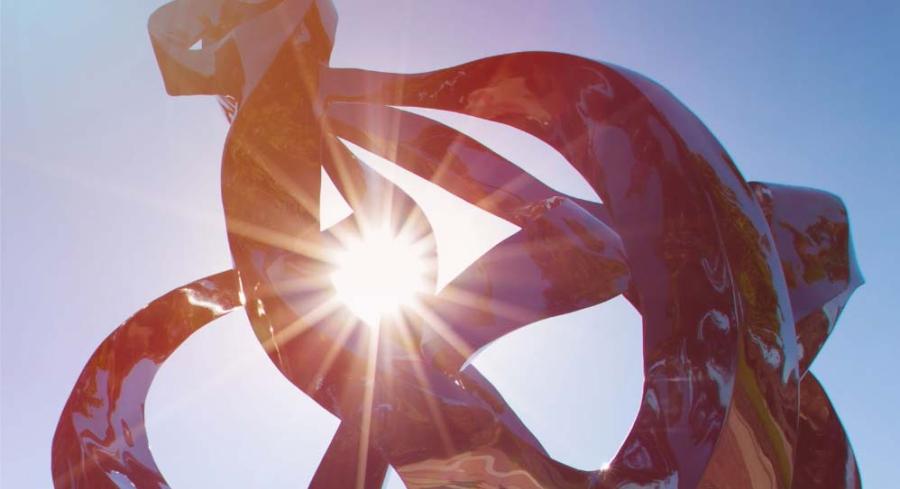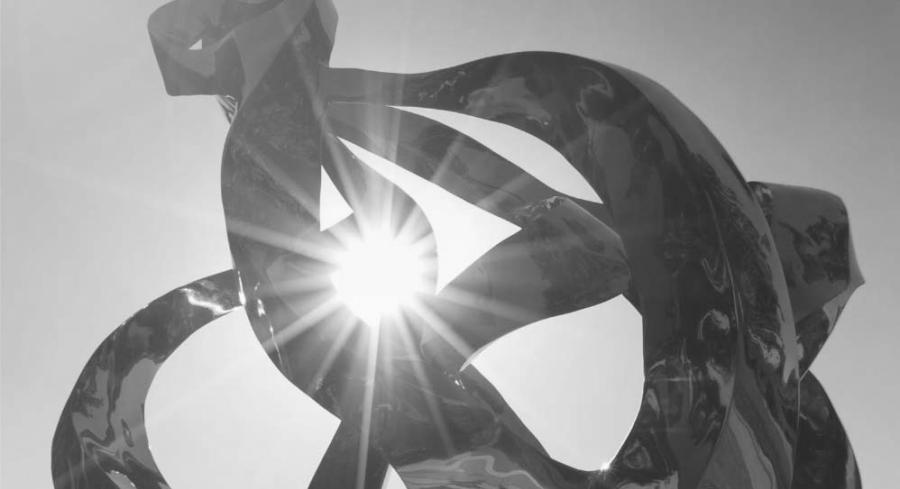Jason C . Bartz, PhD
Associate Dean, Academic and Faculty Affairs
Professor

Contact
School of Medicine
Med Microbiology & Immunology
Medical Microbiology and Immunology (Doctorate)
Medical Microbiology and Immunology (Master of Science)
Neuroscience (Master of Science)
Graduate School
SOM Leadership
SOM Academic Faculty Affairs
CRISS II - Criss 2 - 421
Jason C . Bartz, PhD
Associate Dean, Academic and Faculty Affairs
Professor
Teaching Interests
- Prion disease
Research Focus
Prion diseases are a group of fatal neurodegenerative diseases that affect humans (e.g. Creutzfeldt-Jacob disease) and animals (e.g. chronic wasting disease). Prion diseases have long subclinical incubation periods of months to decades with a short clinical phase that is characterized by the onset of behavioral, cognitive or motor deficits. Deposition of the abnormal isoform of the prion protein, PrPSc is pathognomonic for prion diseases and its deposition in the central nervous system (CNS) results in neuronal loss and onset of clinical symptoms. PrPSc is an amyloid protein that is resistant to proteolytic degradation and is postranslationally derived from the protease sensitive non-amyloid host encoded prion protein, PrPC. Outside of the CNS, PrPSc deposition occurs in the peripheral nervous system and secondary lymphoreticular system (LRS) tissues such as spleen and lymph nodes. All prion diseases of animals and a majority of prion diseases in humans are due to prion exposure by a peripheral route (e.g. ingestion). Details of the mechanism(s) of prion transport to the CNS are poorly understood. To better define prion transport to the CNS my lab is investigating three areas of prion pathogenesis. First, we are exploring alternative routes of prion entry into the host in an attempt to better define the possible routes that prions can gain access to the CNS. Second, we are investigating the role of the innate immune system in processing and transport of prions to secondary LRS tissues. Finally, we are interested in factors that influence susceptibility of neurons to prion infection and/or replication. The understanding of routes and mechanisms of prion transport will enhance the future development of therapeutic interventions to prevent prion spread to the CNS.Department
Med. Microbiology & Immunology
Position
Professor
Books
- Bartelt-Hunt Shannon L, Prions in the Environment - Chapter 10 [Book Chapter] 2023
- Prions and Diseases
Shikiya Ronald A., Prion Strain Interference [Book Chapter] 2023 - Prions and Neurodegenerative Diseases
Holec Sara A.M., The role of prion strain diversity in the development of successful therapeutic treatments [Book Chapter] 2020 - Handbook of Clinical Neurology
Diack Abigail B., Experimental models of human prion diseases and prion strains [Book Chapter] 2018 - Viral Infections of Humans : Epidemiology and Control
Belay Ermias D., Prion Diseases [Book Chapter] 2014 - Prions and Diseases : Volume 1, Physiology and Pathophysiology
Schutt Charles R., Prion strain interference [Book Chapter] 2013 - Prions and Diseases : Volume 2, Animals, Humans and the Environment
Bartelt-Hunt Shannon L., Prions in the environment [Book Chapter] 2013 - Bartelt-Hunt S. L., Soil Binds Prions and Influences their Biologic Properties 2012
Articles
- Sigurdson Christina J., Tracking protein aggregate interactions 2011
Publications
- Pathogens (Basel)
Bartz Jason C., Chronic Wasting Disease: State of the Science
13:2, p. 138 2024 - Biology (Basel, Switzerland)
Simmons Sara M, Strain-Specific Targeting and Destruction of Cells by Prions
13:1, p. 57 2024 - Prion
Eggleston Connor, Expression of the cellular prion protein by mast cells in the human carotid body
17:1, p. 67 - 74 2023 - Journal of enzyme inhibition and medicinal chemistry
Kim Dong Hwan, Synthesis and anti-prion aggregation activity of acylthiosemicarbazide analogues
38:1, p. 2191164 2023 - Prion
Sweetland Gregory D., Expression of the cellular prion protein by mast cells in the human carotid body
17:1, p. 67 - 74 2023 - PLoS pathogens
Gunnels Tess, Evidence for preexisting prion substrain diversity in a biologically cloned prion strain
19:9, p. e1011632 - e1011632 2023 - Scientific reports
Block Alyssa J., Prion protein amino acid sequence influences formation of authentic synthetic PrPSc
13:1, p. 441 - 441 2023 - Environment international
Yuan Qi, Sensitive detection of chronic wasting disease prions recovered from environmentally relevant surfaces
166 2022 - Pathogens
Picasso-Risso Catalina, Assessment of Real-Time Quaking-Induced Conversion (RT-QuIC) Assay, Immunohistochemistry and ELISA for Detection of Chronic Wasting Disease under Field Conditions in White-Tailed Deer
11:5 2022 - Viruses
Koshy Sam M., Transport of Prions in the Peripheral Nervous System
14:3 2022 - Cell and Tissue Research
Block Alyssa J., Prion strains 2022 - PLoS pathogens
Block Alyssa J., Efficient interspecies transmission of synthetic prions
17:July 2021 - Acta Neuropathologica
Bartz Jason C., Environmental and host factors that contribute to prion strain evolution
142:1, p. 5 - 16 2021 - Journal of Biomolecular Structure and Dynamics
Soto Patricia, Cellular prion protein gene polymorphisms linked to differential scrapie susceptibility correlate with distinct residue connectivity between secondary structure elements
39:1, p. 129 - 139 2021 - mSphere
Shikiya Ronald A., Failure to detect prion infectivity in ticks following prion-Infected blood meal
5:5 2020 - Journal of Biological Chemistry
Kang Hae Eun, Incomplete glycosylation during prion infection unmasks a prion protein epitope that facilitates prion detection and strain discrimination
295:30, p. 10420 - 10433 2020 - Journal of Clinical Investigation
Bartz Jason C., Underglycosylated prion protein modulates plaque formation in the brain
130:3, p. 1087 - 1089 2020 - Journal of Clinical Investigation
Bartz Jason C., Underglycosylated Prion protein modulates plaque formation in the brain
130:3, p. 1087 - 1089 2020 - Journal of Biological Chemistry
Bourkas Matthew E.C., Engineering a murine cell line for the stable propagation of hamster prions
294:13, p. 4911 - 4923 2019 - Annual Review of Pathology: Mechanisms of Disease
Sigurdson Christina J., Cellular and Molecular Mechanisms of Prion Disease
14, p. 497 - 516 2019 - mSphere
Holec Sara A.M., Alteration of prion strain emergence by nonhost factors
4:5 2019 - PLoS pathogens
Eckland Thomas E., Independent amplification of co-infected long incubation period low conversion efficiency prion strains
14:10 2018 - Colloids and Surfaces B: Biointerfaces
Phan Hanh T.M., Adsorption and decontamination of α-synuclein from medically and environmentally-relevant surfaces
166, p. 98 - 107 2018 - Journal of Virology
Yuan Qi, Dehydration of prions on environmentally relevant surfaces protects them from inactivation by freezing and thawing
92:8 2018 - Prion
Haley Nicholas J., Design, implementation, and interpretation of amplification studies for prion detection
12:2, p. 73 - 82 2018 - Journal of Immunology
Kane Sarah J., Complement regulatory protein factor H is a soluble prion receptor that potentiates peripheral prion pathogenesis
199:11, p. 3821 - 3827 2017 - Plos Pathogens
Shikiya Ronald A., PrPSc Formation and Clearance as Determinants of Prion Tropism
13:3, p. e1006298 - e1006298 2017 - Proceedings of the National Academy of Sciences of the United States of America
Bian J., Prion Replication without Host Adaptation during Interspecies Transmissions
114:5, p. 1141 - 1146 2017 - Journal of Virology
Kincaid Anthony E., Specificity, Size, and Frequency of Spaces that Characterize the Mechanism of Bulk Transepithelial Transport of Prions in the Nasal Cavities of Hamsters and Mice
90:18, p. 8293 - 8301 2016 - PLoS Pathogens
Bartz Jason C., From Slow Viruses to Prions
12:7, p. (3 pages) 2016 - Journal of Virology
Langenfeld Katie A., Incongruity between Prion Conversion and Incubation Period Following CoInfection
90:12, p. 5715 - 5723 2016 - Biophysical journal
Woo Jesse, Conformational Dynamics of Prion Proteins at the Membrane Interface
110:3, p. 419a - 419a 2016 - Cold Spring Harbor Perspectives in Medicine
Bartz Jason C., Prion strain diversity
6:12 2016 - PLoS One
Phan H. T., Investigation of Bovine Serum Albumin (BSA) Attachment onto Self-Assembled Monolayers (SAMs) Using Combinatorial Quartz Crystal Microbalance with Dissipation (QCM-D) and Spectroscopic Ellipsometry (SE)
10:10, p. (20 pages) 2015 - Journal of Virology
Elder Alan M., Immediate and ongoing detection of prions in the blood of hamsters and deer following oral, nasal, or blood inoculations
89:14, p. 7421 - 7424 2015 - New Horizons in Translational Medicine
Elder Alan M., Longitudinal analysis of blood-borne prion infection
2:4-5, p. 128 - 128 2015 - PLoS Pathogens
Yuan Q., Mitigation of prion infectivity and conversion capacity by a simulated natural process--repeated cycles of drying and wetting
11:2, p. e1004638 2015 - PLoS One
Clouse Melissa D., Nasal Associated Lymphoid Tissue of the Syrian Golden Hamster Expresses High Levels of PrPC
10:2, p. e0117935 (10 pages) 2015 - Biophysical journal
Soto Patricia, Prion Proteins and Mechanisms of Interaction with Model Membranes
108:2, p. 91a - 91a 2015 - Prion
Shikiya Ronald A., Prion formation, but not clearance, is supported by protein misfolding cyclic amplification
8:6, p. 415 - 420 2014 - PloS one
Elder Alan M., In vitro detection of prionemia in TSE-infected cervids and hamsters
8:11 2013 - PLoS pathogens
Bartelt-Hunt Shannon L., Behavior of Prions in the Environment
9:2 2013 - Journal of Virology
Kincaid Anthony E., Rapid Transepithelial Transport of Prions following Inhalation
86:23, p. 12731 - 12740 2012 - Journal of Biological Chemistry
Kang Hae Eun, Characterization of conformation-dependent prion protein epitopes
287:44, p. 37219 - 37232 2012 - PloS one
Saunders Samuel E., Resistance of soil-bound prions to rumen digestion
7:8 2012 - Chemosphere
Saunders Samuel E., Soil-mediated prion transmission
87:7, p. 661 - 667 2012 - Nebraska Academy of Sciences, PO Box 880410 Lincoln NE 68588-0410 United States. [np]. Apr 2012
Colling Ian, BINDING MODES OF AGAAAAGATO SYRIAN HAMSTER PRION PROTEINS 2012 - Emerging Infectious Diseases
Saunders Samuel E., Occurrence, transmission, and zoonotic potential of chronic wasting disease
18:3, p. 369 - 376 2012 - Journal of visualized experiments : JoVE
Saunders Samuel E., Protein misfolding cyclic amplification of prions. 2012 - Prion
Kincaid Anthony E., Multiple routes of prion transepithelial transport in the nasal cavity following inhalation
6, p. 55 - 55 2012 - Applied and Environmental Microbiology
Saunders Samuel E., An enzymatic treatment of soil-bound prions effectively inhibits replication
77:13, p. 4313 - 4317 2011 - Journal of Virology
Saunders Samuel E., Replication efficiency of soil-bound prions varies with soil type
85:11, p. 5476 - 5482 2011 - Experimental Biology and Medicine
Wang Ping, Selection and characterization of DNA aptamers against PrPSc
236:4, p. 466 - 476 2011 - Journal of Virology
Shikiya R. A., In vitro generation of high titer prions
85:24, p. 13439 - 13442 2011 - PLoS Pathogens
Ayers J. I., The Strain-Encoded Relationship between PrP Replication, Stability and Processing in Neurons is Predictive of the Incubation Period of Disease
7:3, p. e1001317 2011 - PloS one
Mays Charles E., In vitro amplification of misfolded prion protein using lysate of cultured cells
6:3 2011 - PloS one
Saunders Samuel E., Effects of solution chemistry and aging time on prion protein adsorption and replication of soil-bound prions
6:4 2011 - Journal of Virology
Shikiya R. A., Co-infecting prion strains compete for a limiting cellular resource
84:11, p. 5706 - 5714 2010 - Environmental Science and Technology
Saunders Samuel E., Enzymatic digestion of chronic wasting disease prions bound to soil
44:11, p. 4129 - 4135 2010 - Environmental Science and Technology
Saunders Samuel E., Prion protein adsorption to soil in a competitive matrix is slow and reduced
43:20, p. 7728 - 7733 2009 - Environmental Science and Technology
Saunders Samuel E., Influence of prion strain on prion protein adsorption to soil in a competitive matrix
43:14, p. 5242 - 5248 2009 - PLoS pathogens
Singh Ajay, Abnormal brain iron homeostasis in human and animal prion disorders
5:3 2009 - Journal of Virology
Ayers Jacob I., Prion strain targeting independent of strain-specific neuronal tropism.
83:1, p. 81 - 87 2009 - Prion
Kramer Michelle L., Rapid, high-throughput detection of PrPSc by 96-well immunoassay
3:1, p. 44 - 48 2009 - Prion
Saunders Samuel E., Prions in the environment
2:4, p. 162 - 169 2008 - Environmental Science and Technology
Saunders Samuel E., Environmentally-relevant forms of the prion protein
42:17, p. 6573 - 6579 2008 - Journal of Comparative Pathology
Sigurdson C. J., Experimental Chronic Wasting Disease (CWD) in the Ferret
138:4, p. 189 - 196 2008 - Prion
Schutt Charles R., Prion interference with multiple prion isolates.
2:2, p. 61 - 63 2008 - Journal of Virology
Kincaid Anthony E., The nasal cavity is a route for prion infection in hamsters
81:9, p. 4482 - 4491 2007 - Journal of Virology
Bartz Jason C., Prion interference is due to a reduction in strain-specific PrPSc levels
81:2, p. 689 - 697 2007 - Veterinary Pathology
Hamir A. N., First and second cattle passage of transmissible mink encephalopathy by intracerebral inoculation
43:2, p. 118 - 126 2006 - Journal of Virology
Marsh R. F., Interspecies transmission of chronic wasting disease prions to squirrel monkeys (Saimiti sciureus)
79:21, p. 13794 - 13796 2005 - Journal of Inorganic Biochemistry
Shara Michael, Safety and toxicological evaluation of a novel niacin-bound chromium (III) complex
99:11, p. 2161 - 2183 2005 - Journal of Virology
Bartz Jason C., Extraneural prion neuroinvasion without lymphoreticular system infection
79:18, p. 11858 - 11863 2005 - Bartz Jason, Prion Transport to Secondary Lymphoreticular System Tissues 2005
- Journal of Virology
Mulcahy Ellyn R., Prion infection of skeletal muscle cells and papillae in the tongue
78:13, p. 6792 - 6798 2004 - Journal of General Virology
Bartz Jason C., Delay in onset of prion disease for the HY strain of transmissible mink encephalopathy as a result of prior peripheral inoculation with the replication-deficient DY strain
85, p. 265 - 273 2004 - Journal of Virology
Bartz Jason C., Rapid prion neuroinvasion following tongue infection
77:1, p. 583 - 591 2003 - Journal of Virology
Bartz Jason C., Retrograde transport of transmissible mink encephalopathy within descending motor tracts
76:11, p. 5759 - 5768 2002 - Journal of Virology
Bartz Jason C., Adaptation and selection of prion protein strain conformations following interspecies transmission of transmissible mink encephalopathy
74:12, p. 5542 - 5547 2000 - Virology
Bartz Jason C., The host range of chronic wasting disease is altered on passage in ferrets
251:2, p. 297 - 301 1998 - Journal of Biological Chemistry
McKenzie Debbie, Reversibility of scrapie inactivation is enhanced by copper
273:40, p. 25545 - 25547 1998 - Seminars in Virology
McKenzie D., Transmissible mink encephalopathy
7:3, p. 201 - 206 1996 - Journal of General Virology
Bartz J. C., Transmissible mink encephalopathy species barrier effect between ferret and mink
75:11, p. 2947 - 2953 1994
Presentations
- "The environmental fate of prions" Rocky Mountain Virology Meeting, Ft. Collins Colorado 2015
- Prion strain tropism - NeuroPrion 2015 2015
- University of Nebraska Medical Center - Prion disease lecture for Pharmacology 930 2015
- University of Nebraska - Lincoln. Prion disease lecture for Viral Pathogenesis graduate student class 2014
- University of Nebraska: The biology of prion diseases 2014
- Iowa State University: Prion strain interference 2014
- University of Nebraska: Prion strain interference 2014
- "Prion strain selection in the central nervous system" University of Minnesota, Minneapolis. 2005
- "Prion strain selection" United States Department of Agriculture, Animal Research Service. Ames, IA. 2005
- "Prion strain selection and targeting in the central nervous system" Nebraska center for virology external advisory meeting. Lincoln, NE. 2005
- "Prion diseases of humans and animals" Nebraska Infection Control Network 25th anniversary educational conference. Omaha NE. August 11-12, 2005. 2005
- Sigurdson, C., Aguzzi, A., Hoover, E., MAthiason, C., Perrott, M., Glatzel, M., Bartz, J.C., Manco, G., Sprker, T. and Miller, M. (2005). Chronic wasting disease: across the species barrier. The Second International Chronic Wasting Disease Symposium. Madison WI. July 12-14, 2005. 2005
- Ayers, J.A., Kincaid, A.E. and Bartz, J.C. (2005). Prion strain targeting. The Second International Chronic Wasting Disease Symposium. Madison WI. July 12-14, 2005. 2005
- "Prion strain selection in the central nervous system" The Second International Chronic Wasting Disease Symposium. Madison WI. July 12-14, 2005. 2005
- "Prion pathogenesis" AOAC International meeting and exposition. Kansas City, Missouri. 2005
- "Prion diseases of humans and animals" Nebraska and Iowa Clinical Science Laboratory Meeting. Mid-America Center, Council Bluffs, IA. 2005
- "Prion strain targeting and competition in the central nervous system" Department of Veterinary Science, South Dakota State University, Brookings SD. 2005
- "Interspecies transmission of prion diseases" Creighton University Medicine 2005
- "Interspecies transmission of prion diseases" Oklahoma State University, Stillwater OK. 2005
- "Interspecies transmission of prion diseases" University of Nebraska Medical Center Department of Genetics, Cell Biology and Anatomy Seminar Series, Omaha, NE. 2005
- "Prion diseases of humans and animals" University of Nebraska Medical Center Molecular Diagnostics Laboratory Group, Omaha, NE. 2005
- Kincaid, A.E, Kramer, M. and Bartz, J.C. (2005). Prion strain competition in the central nervous system. Keystone Symposia "Molecular Mechanisms of Transmissible Spongiform Encephalopathies (Prion Diseases)". Snowbird, UT. 2005
- "Interspecies transmission of prions" Nebraska Infectious Disease Seminar. 2004
- "Prion competition in the central nervous system" Animal prion diseases and the Americas, Ames IA. 2004
- "Prion strain targeting and competition" Fourth annual Nebraska Center for Virology Symposium in Virology. University of Nebraska Lincoln. 2004
- "Interspecies transmission of prion diseases" Chronic wasting disease / transmissible spongiform encephalopathy symposium, North Dakota Department of Agriculture, Bismarck, ND. 2004
- "The Design of a Single Round Infectivity Assay for Mason-Pfizer Monkey Virus Using Green Fluorscing Protein" BRIN Student Jessica Hutter-Doane College 2004
- "Interspecies Transmission of Prion Diseases" 2004
- " Interspecies transmission of prion diseases" Creighton University Medical Center, Osteoporosis research center seminar. Omaha NE. 2004
Awards
- Dr. Robert Heaney Graduate Research Mentor Award
Creighton University - Maiben Lecturer
Nebraska Academy of Sciences - Distinguished Lecturer
American Society for Microbiology - Richard A. Bessen Memorial Lecturer
Rocky Mountain Virology Meeting - Academy for Excellence in Team Science
University of Minnesota - University Research Award
Creighton University - Young Investigator Award
Creighton University - Richard F. Marsh Award for Outstanding Graduate Student Research
University of Wisconsin









